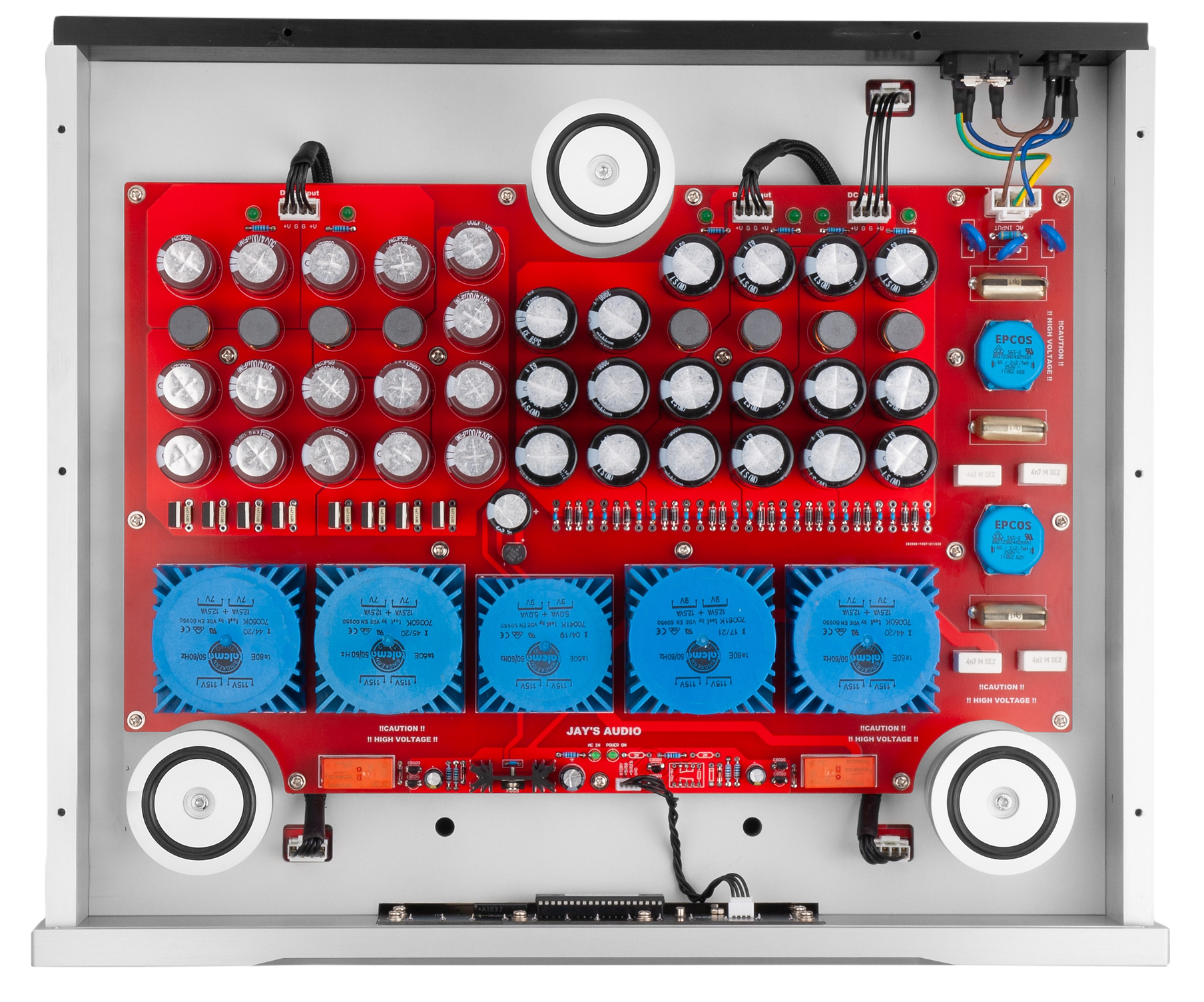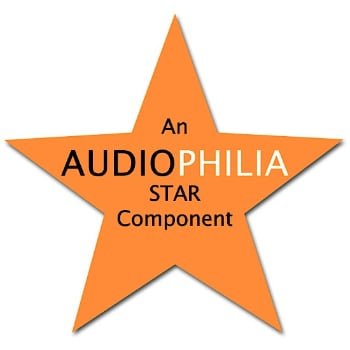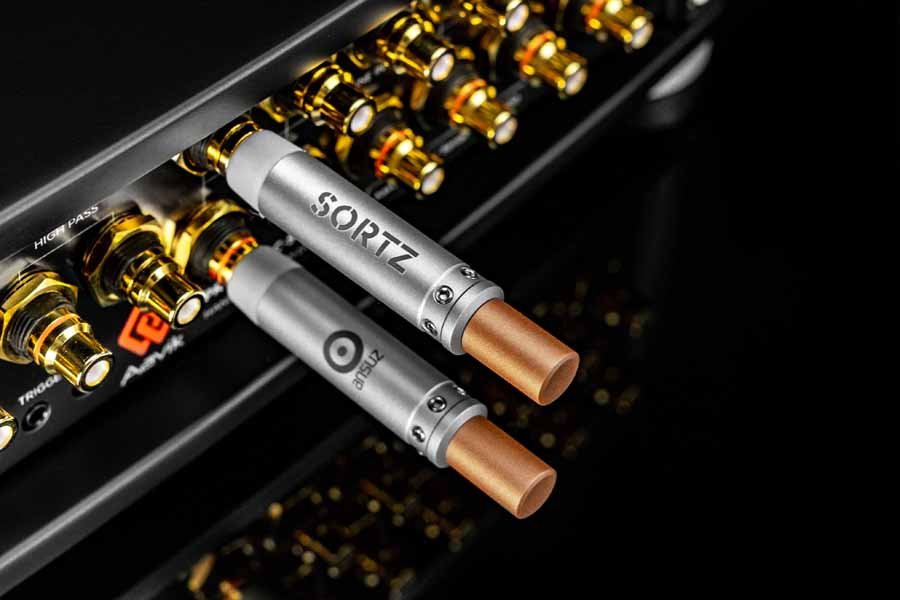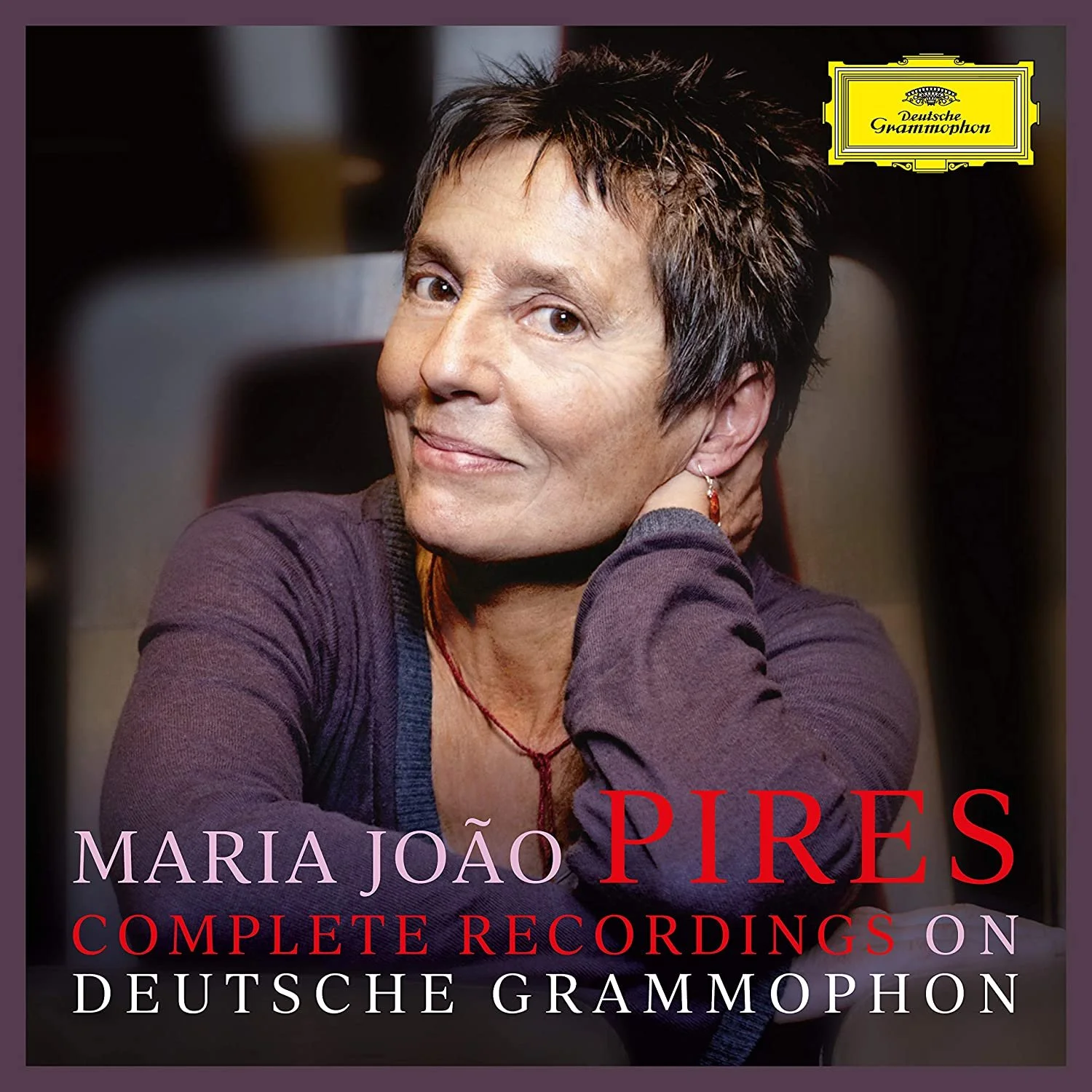Jay's Audio CDT3-MK3 CD Transport
This is a CD Red Book-only transport.
Many of us have a collection of CDs built up over many years we don’t use anymore due to ripping and modern streaming services such as Qobuz and Tidal. Some have even been known to have given their collection away or thrown it out, just as many people did over the years with vinyl LPs after deciding to go digital-only. A buyer’s market rapidly grew: In NYC, for example, for years now (but slowing down), one has been able to find loads of used CDs for $1 or $2 sold on the street and in small shops, and bargains on the internet—I bought many that way even though I have not had a CD player in my audio system for over 12 years. My collection of CDs is now in the hundreds. A major advantage of used CDs over used LPs is unless damaged, they offer the same bit-perfect information as a new one, and that information can be faithfully copied.
There appears to be, however, a change in the air just as there has been (still ongoing) for vinyl; for example, interesting fine new box sets of classical music CDs are being re-released [check out some superb recent ones reviewed by our Editor/Publisher], while some CDs are getting very hard to obtain. Also, there is a rising number of audiophiles who swear that a CD played in a fine disc transport in a fine system can sometimes sound better than its streaming counterpart.
The above discussion brings our attention to the review here of the new Jay’s Audio CDT-3 MK3 Transport ($4,998), a Red Book-only (16/44.1) CD transport. (It does not support HDCD/SACD/DSD.) Many thanks to Vincent Ong of Beatechnik Singapore (main distributor and sales for Jay’s), for kindly sending me a unit for review, and to Alvin Chee (Vinshine Audio, Singapore) for introducing me to Ong. I had been thinking about reviewing the earlier (CDT-2) model but was informed that a new model (greatly redesigned) was about to come out; the timing was good.
“Jay” from Jay’s Audio refers to Jay (Jackie) Ho, founder and owner of the company 22 years ago. Ho began exploring the use of Philips CD laser modules (originally from the early 1980s) for the construction of a CD transport. Such modules evolved over time and culminated in the Philips CDPro2 LF module (mostly metal, expensive) in about 2005; and that (modified/tuned by Ho) is what Ho is using in this new CDT-3 MK3 flagship model; a major redesign of previous models. (The most recent previous model (2021) is the CDT-2-MK3 at half the price ($2498) and utilizes the much less expensive Philips CDM4/19 module (mostly made of plastic).) As explained on their website, the new design also includes:
An innovative approach to address the vibration by means of a massive CNC milled aluminum plate which divides the chassis into two independent partitions for power supply and signal path. All parts and components are mounted on both sides of this base plate which is mechanically grounded by 3 standing columns.
That means it isolates the AC and first stage of each independent power supply from the signal path, clocking, and optical drive, as well as the final stage power supplies.
Further significant changes include:
3 stable and more advanced anti-resonance footers attached to the internal sub-chassis plate (2 in front, 1 in back).
5 higher performance (lower noise), independent power supplies on 3 isolated circuit boards. The clock has its own independent power supply on an isolated circuit board to minimize clocking noise polluting other power supplies, and each power supply has its own independent power transformer.
Better galvanic isolation and higher performance digital outputs using Scientific Digital transformers and Mundorf silver capacitors.
A better SC-CUT OCXO (oven-controlled crystal oscillator) 10MHz clock with a low-jitter PLL circuit resulting in residual jitter below 1ps (which is so low it is unmeasurable).
Specifications
Digital Output: COAX (RCA/BNC) 2v @ 75ohm; AES/EBU 5V @110ohm
I2S Output: HDMI i2s LVDS, RJ45 i2s LVCMOS
Sampling Rate: 44.1kHz, 176.4kHz (via a 24/176.4 upsampling switch on the back)
Clock-Output: 10MHz / 5 V p-p / 75 Ω
Clock-Input: 10MHz / 0.3 – 5 V p-p / 50 to 75 Ω
AC Power: 110V/230V, 50-60Hz
Dimension: 450mm x 380mm x 150mm
Weight: 22KG
Warranty: 12 months
Construction and layout
The unit comes in silver or black; I had the silver. It is heavy aluminum (about 50 pounds), but because the 3 attached footers are so well made, I had no need to use third-party alternatives. As a whole, it looks unlike a traditional CD player/transport, but it does look serious, inert, formidable and powerful, with an interesting-looking bump on its top.
The front, with ‘Jay’s Audio’ etched in the metal near the top, has a small centred display and a standard series of 6 buttons (Play, Stop, etc.).
The back has a power switch (and you can connect your own power cord), 3 standard digital outputs (Coaxial, BNC, AES/EBU) as well as I2S (HDMI/RJ45). It also has a UPS (upsampling) lever to switch between the 16-bit/44.1 kHz Red Book resolution versus upsampling it to 24-bit/176.4 kHz. (Note: It is not labelled, but I was able to determine that the up position is the upsampling by playing music on a DAC that displays what resolution is sent to it.)
Most high-end transports/players use a slot for the CD to slide into, or a tray that must be engaged to come out for the disc to be placed into then must move back inside. Such a method can result in a variety of problems; for example, the slide-in CD does not come out, the tray gets jammed and will not open, or even by mistake one can break off the tray itself.
The Jay’s is different and foolproof: Referred to as a “top loader”, on the top is a heavy-duty sliding metal door that you manually slide open (that is the interesting bump on the top I mentioned). Then put the CD onto the centering hub on the fixed-in-place exposed platter, place a supplied small “puck” on the CD and then slide the door closed. At that point, the front monitor says “Reading Disk”, and then it displays that the CD is ready for playing and shows how many tracks it has and the total amount of time. At that point, you can press play, or via the supplied remote, play a specific track. The supplied remote is solid aluminum, well made and heavy: 8cm x 2cm x 0.75cm, 290gm, with ample selection possibilities.
Top detail.
Set up
The unit was new and I followed the suggestion of giving it several days of burn-in; I kept a CD going on repeat mode for extended periods. I used a coaxial cable from the CDT-3 to DAC including my reference DAC, Mojo Audio Mystique Evo PRO D/A Converter as well as the very new Mojo Audio Mystique X (review forthcoming). For streaming comparison, I used as reference the Mojo Audio Deja-Vu Music Server (cabled to the internet, endowed with a Roon Core) with a USB cable from it to DAC. Preamplifier: PS Audio BHK Signature. Amps: Audio by Van Alstine DVS SET 600 mono blocks. Speakers: Alta Audio FRM-2M. Digital cables: Audio Art Cable (Statement series) and Mojo Audio for coaxial, Wireworld (Platinum) for ethernet and USB. The BHK preamp has a built-in headphone amp; I used as my reference headphones: HIFIMAN HE-R10P (planar magnetic). In particular, I sometimes used them late at night when my family was sleeping, and to try more carefully to notice any differences in sound between the CDT-3 and streaming.
Fresh out of the box, the CDT-3 MK3 ($4,998) sounded quite good, although in comparison to my music server it was duller. But sure enough after about 5 days, the soundstage had tightened, timing and timbre became natural, clean, crisp and clear, with ample textures, and nuances—musical. No noticeable distortion; a dead quiet background prevailed. After several more days, I could honestly say, “It sounds at least as good as the best of my expensive streaming front end”. Sometimes I thought I liked the sound better, it sounded a tiny bit more natural, maybe due to timing as to when a cymbal is hit and there is the fast initial attack and evolving sounds and then the decay; same with timpani. It also occasionally seemed to have a more natural presentation of voice with an ever so slightly more nuanced handling of venue reflections involving reverb and echo, and perhaps more micro-dynamics exposed. But not always.
I found myself naturally listening to entire CDs from beginning to end—without jumping around between CDs to sample various tracks. A great pleasure.
Underneath the chassis.
Next, I offer more specifics after the unit was well burned in.
Music and method of testing
My collection of CDs includes many of my choosing plus hundreds of classical CDs inherited from my father. But instead of devoting time ripping many or most of them, I admit to having followed (for years now) the advice of Mark Twain who—poking fun at Benjamin Franklin’s previous advice from days of yore—once famously wrote, “Never put off till tomorrow what you can do the day after tomorrow.”
For this review, then, I ripped some more as necessary to make a fair comparison between the sound of the transport played CD versus its ripped (16/44.1) counterpart on the music server. I employed the following method: I took out some notable CDs of interest. I made sure that they were ripped (to uncompressed FLAC) and transferred the files onto my music server’s internal SSD drive. When I made a comparison, I did not use streaming services; only the ripped file. I ended up keeping the upsampling switch off when comparing; I did not want to add in additional variables to complicate things, and my DAC is non-oversampling anyhow, so the only way I could try to equalize it would be to use some form of DSP in Roon to do upsampling when streaming—I did not want to go there.
My DAC has buttons on its front that allow choosing between the 2 inputs used, Coaxial (for the CDT-3), and USB (for the music server). I would start both the CD and the ripped file playing at the same time (at most off by a second) and freely swap the inputs at leisure. But since the DAC is not controlled by a remote, and I preferred to remain seated in the sweet spot of my couch while quickly swapping back and forth, I had one of my kids stand next to the DAC for a while and switch upon my command. That was very useful.
Here are some main examples I used with some comments offered on some:
Unplugged, Eric Clapton, Reprise Records (1992).
This is one where I think some of the tracks such as “Tears in Heaven” and “Lonely Stranger” offered a glimpse of what I meant earlier about the CDT-3 offering a dash more natural presentation of voice, venue reflections, and more micro-dynamics exposed.
Random Acts of Happiness, Bill Bruford’s Earthworks, Summerfold Records (2004).
This is one where the percussion seemed to sound a tiny bit more natural on the CDT-3 due to timing. In particular, the track “Speaking with Wooden Tongues” is a gem, and also check out the previous track, “With Friends Like These…”, in which Bill Bruford illustrates his impressive dexterity on solo drums.
Falla: The Three-Cornered Hat, Ansermet conducting (2017 Hybrid SACD from the 1961 original, Decca). I can’t play the DSD layer, but the Red Book CD layer is outstanding—the ripped version or the CD itself. Even when using headphones, I could not distinguish between them; I’ll take either. The venue, Victoria Hall, Geneva, offers up beautiful reflections in instruments and voice. Both hall and recording are considered masterpieces for good reason.
Behind the mix, Allen Taylor, Stockfisch, 2017.
Very close, intimate and musical on both CDT-3 and streaming; I had difficulty distinguishing.
The World is a Ghetto, War, (40th Anniversary Expanded Edition), Universal Music Enterprises (2012). The track, “The Four-Cornered Room”. This studio recording is chock full of fascinating psychedelic ornaments decorating a large sound stage. Even if there were differences it would be impossible, I think, to claim which was better.
Mozart, Variations on Ah vous dirai-je, maman, K255, Fazil Say, piano, Warner Music France (1997). An uplifting lively performance by Say that forever has been charming my children, too.
Beethoven Sonata No. 21 in C Major, Op. 53 “Waldstein”, Wilhelm Kempff, piano, Deutsche Grammophon (1965) (Box set, disc 6). A superb performance by Kempff, this famous sonata named after Count Ferdinand Ernst Gabriel von Waldstein is part of a large box set of all the Beethoven Sonatas with Kempff I inherited from my father. The intense, fast start alone is brilliantly handled by Kempff and sounds tremendous on this CD.
Manu Katché, by Manu Katché, ECM (2012).
The track, “Bliss” where there is an apparent mix of the use of timpani with the 1960s/1970s Hammond B3 organ style is unusual. Possibly the sound of the timpani was slightly more resonant in the CDT-3, but I am not sure.
Summary
A journey well worth taking, Jay’s Audio CDT-3 MK3 opened my eyes to CD playing after a long hiatus. Built to last, including a solid remote control to match, with exceptional engineering, it is simple to use, virtually unbreakable and the sound quality is divine. The CDT-3 MK3 ($4,998) can easily make one realize, for those in doubt, how superb a Red Book CD can sound when played properly. Don’t throw away your CDs; instead, if you can, acquire a fine CD transport as another component in your system to compliment your streaming. Very highly recommended.
Further information: Jay’s Audio









